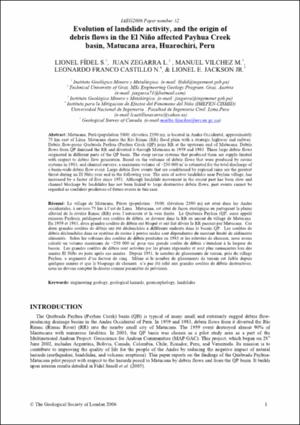Please use this identifier to cite or link to this item:
https://hdl.handle.net/20.500.12544/2567Files in This Item:
| File | Description | Size | Format | |
|---|---|---|---|---|
| Fidel-Evolution_of_landslide_activity_Matucana.pdf | Artículo presentado en congreso | 505.24 kB | Adobe PDF | View/Open |
This item is licensed under a Creative Commons License












